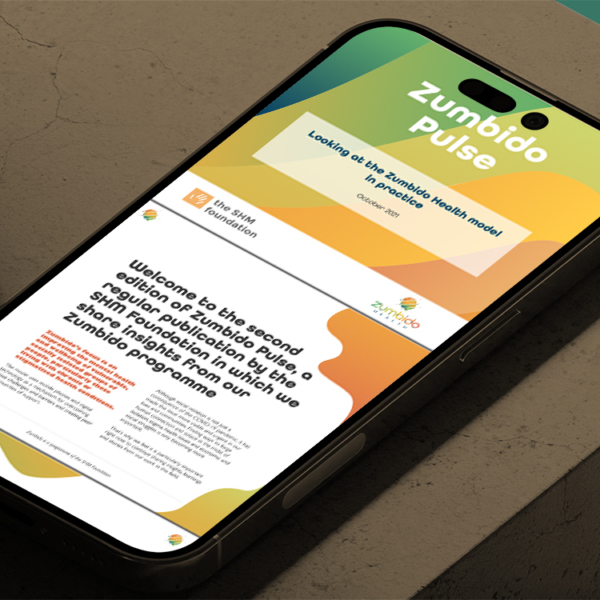
Zumbido Pulse Edition II: Learnings from Insaka, Khuluma, Zvandiri Support Groups
Over the last 12 months we have implemented the Zumbido health model in three countries in Southern Africa. We capture the learnings from our work in this blog!
Published on Oct 05, 2021
Zumbido Pulse Edition II: Learnings from Insaka, Khuluma, Zvandiri Support Groups
Over the last 12 months we have implemented the Zumbido health model in three countries in Southern Africa. We capture the learnings from our work in this blog!
Published on Oct 05, 2021

Welcome to the second edition of Zumbido Pulse!
This is a regular publication by the SHM Foundation in which we share insights from our Zumbido programme. Zumbido’s focus is on improving the mental health and wellbeing of vulnerable, socially isolated groups of people, particularly those living with chronic or stigmatised health conditions. The model uses mobile phones and digital technology as a mechanism for overcoming those challenges and barriers and creating peer communities of support.
What's new?
In the last edition we shared the origin story of Zumbido, and offered a starting point for thinking about how to design support interventions that make use of digital technology. Our main message was that the process of understanding the aspirations, needs, capabilities and resources of your participants is crucial to work out what kind of technology is suitable, how it should be used and modified, and what potential pitfalls to avoid. Read the full version of Zumbido Pulse edition I here.
In this edition we share some of the fruits of this process in our own work. Over the last 12 months we have implemented the Zumbido model in four different projects in three countries in Southern Africa: Insaka in Zambia, Khuluma in South Africa, and both Zvandiri Lounge in Zimbabwe. The populations we’ve worked with in each have had varying needs and expectations, and so the resulting intervention in each context has looked different, and been incredibly varied in the kinds of engagement and connection it has produced.
We hope that this edition can shed light on the nuances of incorporating digital technologies into social support programmes - or indeed other kinds of health or development interventions - and how subtle adaptations to digitally enabled models can generate very different digital spaces.
Read the full edition of Zumbido Pulse Edition II here.

Contact Us

Have a challenge you think we could help with? A project you'd like us to collaborate on?
Just want to say hi? Reach out - we love meeting new people